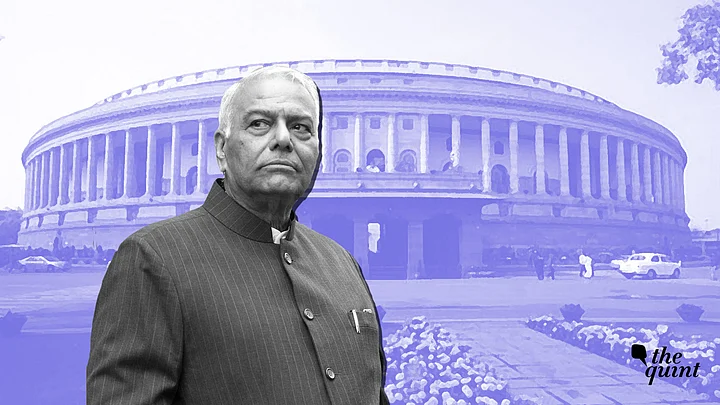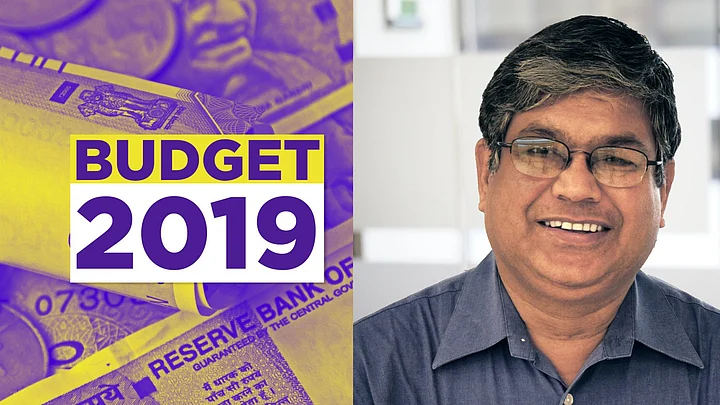Budgetary allocation to the ministry of skill development and entrepreneurship (MSDE) has witnessed a 237 percent increase over the last four years, from Rs 1,007 crore (actual expenditure) in 2015-16 to Rs 3,400 crore (budget estimate) in 2018-19, according to ministry data.
The 2018-19 allocation, however, represents a “drastic cut” by the ministry of finance against the Rs 7,696.54 crore requested by the MSDE, due to under-utilisation of funds allocated to the MSDE in previous years, revealed a parliamentary committee report in March 2018.
The committee warned that the budget cut would “adversely affect various schemes” implemented by the ministry tasked with skilling India’s youth.
In November 2018, the government’s aim to skill 10 million youth under the Pradhan Mantri Kaushal Vikas Yojana (PMKVY, or Prime Minister’s Skill Development programme) by 2020 was found to be 64 percent short of meeting the target.
Just over 3.6 million people had been enrolled in PMKVY by 30 November 2018, government data showed. Among these, 3.39 million had received training and 2.6 million had received certification after training 66 percent and 74 percent short of the target, respectively.
There is a direct link between India’s under-skilled workforce and high unemployment rates. Unemployment has been a key challenge for the National Democratic Alliance (NDA) government. The unemployment rate for people aged 15 years and above in India was 3.4 percent in 2013-14, which saw a further increase to 3.7 percent in 2015-16, according to a government reply to the Lok Sabha on 23 July 2018, which did not provide data on numbers of unemployed.
The unemployment rate rose to a four year high (3.9 percent) in 2016-17, Business Standard reported on 11 January 2019, citing the labour bureau’s sixth annual employment-unemployment survey.
Post 2016-17, the government has not released employment data. But, about 4.75 million people are added to the labour force in India every year, an IndiaSpend analysis of labour bureau data over a period of four years from 2012 showed. Thus, over 20 million will have joined the workforce during the planned course of the PMKVY, double the numbers targeted by the programme.
The demand for skilled labour was estimated to be over 128 million between 2017 and 2022 in 34 sectors across industries, according to MSDE’s annual report, 2017-18.
But less than 5 percent of India’s workforce is formally skilled, compared to South Korea (96 percent), Japan (80 percent), Germany (75 percent), United Kingdom (68 percent) and the United States (52 percent), according to MSDE’s annual report, 2015-16.
Funding for MSDE up in 4 Years, But Utilisation Remains Low
Unless skill development programmes receive impetus, the numbers of the unemployable will only rise. Recognising this, the NDA government set up a separate ministry of skill development and entrepreneurship on 9 November 2014. Till 2014, skill development and industrial training programmes were run by the ministry of labour and employment.
Prime Minister Narendra Modi launched the Skill India initiative on 15 July 2015, with PMKVY as the flagship programme.
The first edition of PMKVY (2015-16) faced implementational challenges, IndiaSpend reported on 24 July 2017. The second edition (PMKVY 2.0) was launched in July 2016 to make it more effective and transparent, with an aim to skill 10 million youth over four years (2016-20), with a budgetary outlay of Rs 12,000 crore.
The ministry of finance allocated Rs 3,400 crore in 2018-19 (budget estimate) to the MSDE, an increase of 55 percent from Rs 2,198 crore in 2017-18 and a 237 percent increase over the last four years from Rs 1,007.47 crore in 2015-16.
The MSDE, however, had proposed a sum of Rs 7,696.54 crore for its 2018-19 budget estimate. The finance ministry approved only 44 percent (Rs 3,400 crore) of the proposed amount, the Thirty Fourth Report on 'Demands for Grants (2018-19)' of the Ministry of Skill Development & Entrepreneurship, presented in parliament on 13 March 2018, revealed.
Parliament Committee Warned in March 2018 That MSDE Schemes May Not Meet Targets
“The Ministry of Finance has reportedly allocated an amount of Rs 3,400 crore considering expenditure trend, unspent balances available with the implementing agencies and availability of fund, implying thereby that owing to lack of requisite efficiency of the MSDE, in the previous years, the Ministry of Finance has made drastic reduction in the [budget estimate] BE for the year 2018-19,” the parliamentary committee noted in its report.
The committee highlighted under-utilisation of funds allocated to the MSDE in financial years 2016-17 and 2017-18. The ministry was allocated Rs 1,804.28 crore in its 2016-17 budget estimate, which was increased to Rs 2,173 crore under revised estimate, but utilised only Rs 1,553.09 crore.
In 2017-18, the ministry was allocated Rs 3,016.14 crore (budget estimate), which was reduced to Rs 2,356.22 crore under the revised estimate, while the expenditure noted by the committee when it tabled its report in March 2018 was Rs 1,505.65 crore. The expenditure subsequently rose to Rs 2,198.01 crore by 31 March 2018, nearly 27 percent short of the MSDE’s budget estimate.
Reduction in the budgetary allocation in 2018-19 will “adversely affect various schemes” implemented by the ministry, the committee had cautioned. This has been evidenced by the PMKVY lagging way behind targets.
The committee had also asked the ministry to come up with a “fool proof action plan to avoid any pitfalls and a strong monitoring mechanism for optimal utilisation of allocated funds”.
In response, the MSDE submitted that it did not have “the minimum required staff to man essential functions” relating to disbursals under PMKVY-1. It further said:
“The new scheme [PMKVY-2] involved various quality parameters which took considerable time for implementation. Therefore, the expenditure under the scheme could not be incurred as per expectations.”
The ministry added that it is “closely monitoring the expenditure trend and unspent balances with the implementing agencies at the year end. The expenditure during the early months of the financial year 2018-19 will be increased so that in case additional demand crops up, more funds could be sought in RE [revised estimate] 2018-19.”
The ministry’s quarterly report for quarter-1 (Q1) of 2018-19 did show an increase in expenditure. The ministry utilised 23 percent or Rs 770.29 crore of its Rs 3,400 crore budget estimate, as against 10 percent (Rs 300.94 crore) in Q1 of 2017-18 and 11 percent (Rs 201.89 crore) in Q1 of 2016-17.
The committee also pointed out that there was no separate allocation of funds for research and development (R&D) in the field of skill development, stating that this could be one of the reasons why India “is yet to come in the forefront of skilled manpower development”.
It recommended that the MSDE come up with a separate budget head for R&D in their demand for grants.
Employment Numbers of Even Those Skilled Under PMKVY at Just 10% of the Target
There has been improvement in the numbers of skilled labour in the past four years. Availability of employable talent in India has increased from 34 percent in 2014 to 47 percent in 2019, according to India Skills Report 2019, released by the Confederation of Indian Industry and talent assessment firm, Wheebox, in November 2018.
The report assessed over 300,000 college students across India on parameters such as knowledge, skill aptitude and behavioral components.
But of the 1.84 million who had been trained and certified under the PMKVY short term training programmes by 31 August 2018, just over 1 million (1,009,638) had been placed in jobs.
“The government had asked industry to provide jobs to personnel trained in their respective sector skill councils [industry-led, sector-specific councils for skills training set up and provided with initial seed funding under the MSDE’s National Skill Development Corporation], warning that future fund allocation to the council will be withheld and unutilised money will be taken back if there is no increase in hiring,” The Economic Times reported in January 2018.
IndiaSpend has written to MSDE for comments on 23 January 2019, with follow-up emails on 24 and 25 January. We will update the article if and when we receive their reply.
“We need to set targets for percentage of people skilled, the way it’s done for literacy, on urgent priority,” Ashutosh Pratap, an expert on skills and employment who has worked with several central and state ministries, told IndiaSpend.
Pratap added that the government’s priorities for skill development should include setting up a board akin to the Central Board of Secondary Education to “ensure sanctity of assessments of skill development”, as soon as possible.
“We must also provide an incentive mechanism to ensure employers have more skin in the game.”Ashutosh Pratap, an expert on skills and employment
The average age of an Indian would be 29 years by 2020 (when PMKVY 2.0 runs its course), making India the world’s youngest country, with 64 percent of the population in the working age group, Sushma Swaraj, minister of external affairs said on 21 January 2019.
The budget for 2019-20 must address the need to scale up skill development in face of increasing unemployment, if India is to benefit from this demographic dividend.
(This was first published on IndiaSpend and has been republished with permission.)
(At The Quint, we question everything. Play an active role in shaping our journalism by becoming a member today.)





